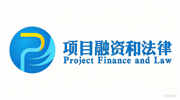Simandou opens, reshaping the capesize trades

The long-awaited Simandou iron ore project has finally roared to life — a $20bn gamechanger set to shake up global dry bulk flows, stretch tonne-miles, and tilt the balance of the iron ore market away from Australia and Brazil.
On Tuesday, Guinea officially launched the vast Simandou project — Africa’s largest greenfield mine and infrastructure development — in a ceremony at the port of Matakong, marking a turning point for both the West African nation and the dry bulk trades.
The multi-billion-dollar project, jointly developed by China Baowu Group, Rio Tinto, and Winning Consortium Simandou, links the mineral-rich interior of Guinea to the coast via more than 600 km of new rail, port, and transshipment facilities. Once fully commissioned, Simandou will be capable of producing and exporting up to 120m tonnes of high-grade iron ore a year, positioning Guinea as the world’s third-largest iron ore exporter, behind only Australia and Brazil.
The 11,350 nautical mile Guinea–China route is over 220% longer than the 3,500 nm haul from Western Australia to Qingdao
“This is a landmark moment not just for Guinea, but for global mining,” said Hu Wangming, chairman of China Baowu. “Simandou will provide a foundation of green raw materials for the steel industry and inject lasting momentum into Guinea’s development.”
For the dry bulk shipping world, the implications are enormous.
According to Veson Nautical, if 120m tonnes of Guinean ore were to displace equivalent Australian volumes into China, total iron ore tonne-miles would surge by around 10%, leading to a 3.5% increase in overall dry bulk ton-mile demand — a seismic shift in fleet utilisation that could tighten the capesize market through to 2028.
“The distance from Guinea to China is roughly three times that from Western Australia,” Veson analysts noted. “That alone will fundamentally reshape trading patterns and seasonality in the capesize segment.”
Guinea’s dry bulk revolution has already begun. Over the past decade, the country’s bauxite exports have soared, transforming it into the world’s leading supplier to Chinese refiners. Now, Simandou’s high-grade ore promises to extend that influence deep into the capesize and panamax markets.
Kpler’s senior dry bulk lead, Alexis Ellender, confirmed that the first cargo from Simandou — loading onto the Winning Youth newcastlemax— is already under way. “We expect only small volumes this year before a serious ramp-up in 2026,” he said. “But even a trickle of Simandou ore will start shifting market sentiment.”
Ellender expects the arrival of high-grade Guinean ore to put pressure on benchmark iron ore prices, already sliding amid weaker Chinese steel margins. “At the same time,” he added, “more West African chartering will boost fronthaul capesize demand and inject new seasonality into dry bulk trades.”
Shipping analysts at BRS agreed, describing Simandou’s debut as a “structural shift in Atlantic tonne-mile demand.” They estimate the 11,350 nautical mile Guinea–China route is over 220% longer than the 3,500 nm haul from Western Australia to Qingdao. “The gradual ramp-up at Simandou will extend both ballast and laden legs, tightening effective vessel supply,” the broker observed.
Beyond its shipping implications, Simandou marks a geopolitical and industrial pivot. China — simultaneously the project’s biggest investor and customer — now gains an alternative to its heavy reliance on Australian and Brazilian ore. As Beijing’s relations with Canberra remain cool, Guinea’s iron-rich hills offer both diversification and leverage.
For shipowners, however, the bigger story is in tonne-miles, congestion, and timing. Analysts at Veson project that exports could start scaling up in earnest shortly, hitting full capacity by mid-2028.






